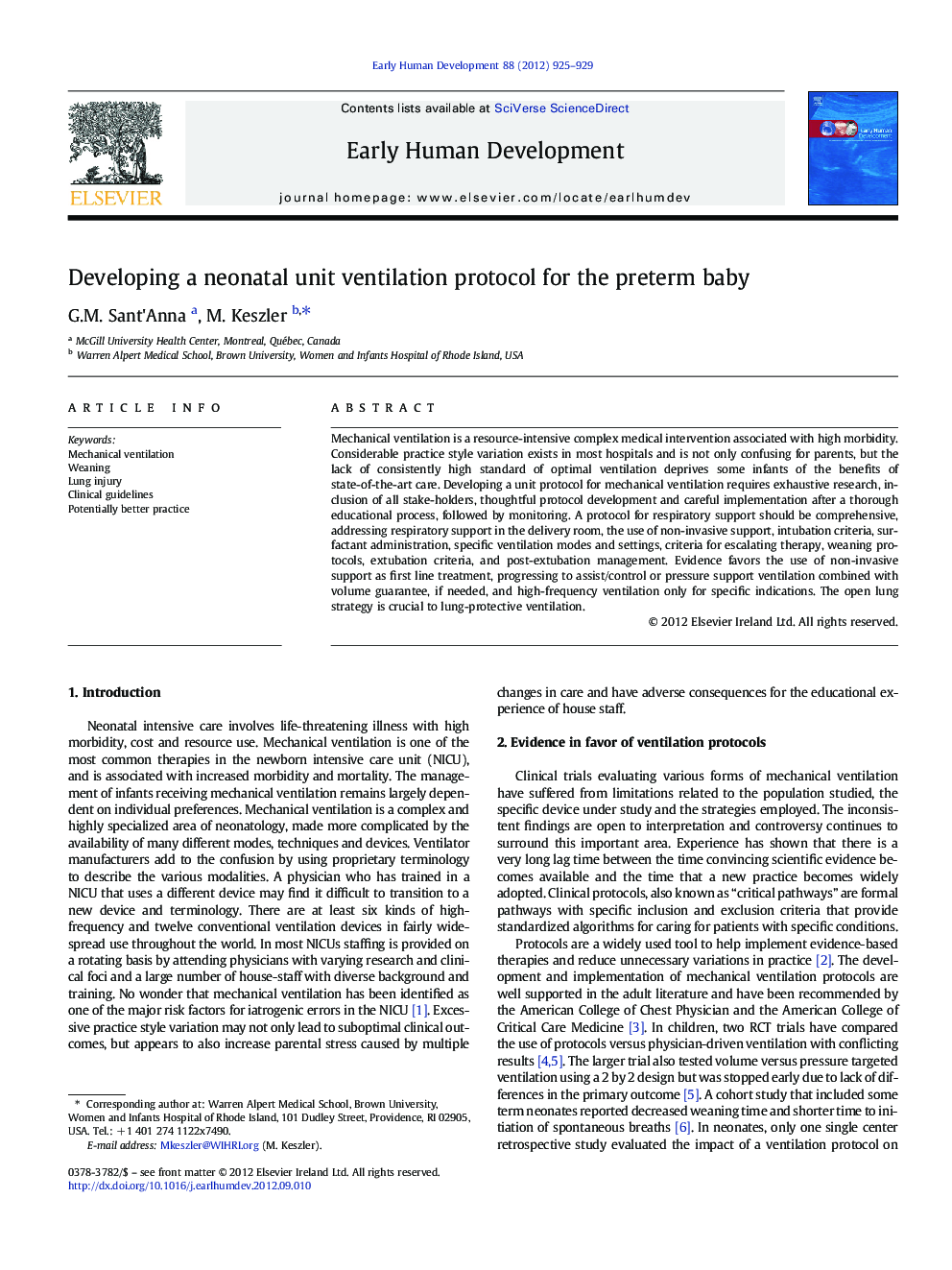| Article ID | Journal | Published Year | Pages | File Type |
|---|---|---|---|---|
| 6172346 | Early Human Development | 2012 | 5 Pages |
Mechanical ventilation is a resource-intensive complex medical intervention associated with high morbidity. Considerable practice style variation exists in most hospitals and is not only confusing for parents, but the lack of consistently high standard of optimal ventilation deprives some infants of the benefits of state-of-the-art care. Developing a unit protocol for mechanical ventilation requires exhaustive research, inclusion of all stake-holders, thoughtful protocol development and careful implementation after a thorough educational process, followed by monitoring. A protocol for respiratory support should be comprehensive, addressing respiratory support in the delivery room, the use of non-invasive support, intubation criteria, surfactant administration, specific ventilation modes and settings, criteria for escalating therapy, weaning protocols, extubation criteria, and post-extubation management. Evidence favors the use of non-invasive support as first line treatment, progressing to assist/control or pressure support ventilation combined with volume guarantee, if needed, and high-frequency ventilation only for specific indications. The open lung strategy is crucial to lung-protective ventilation.
